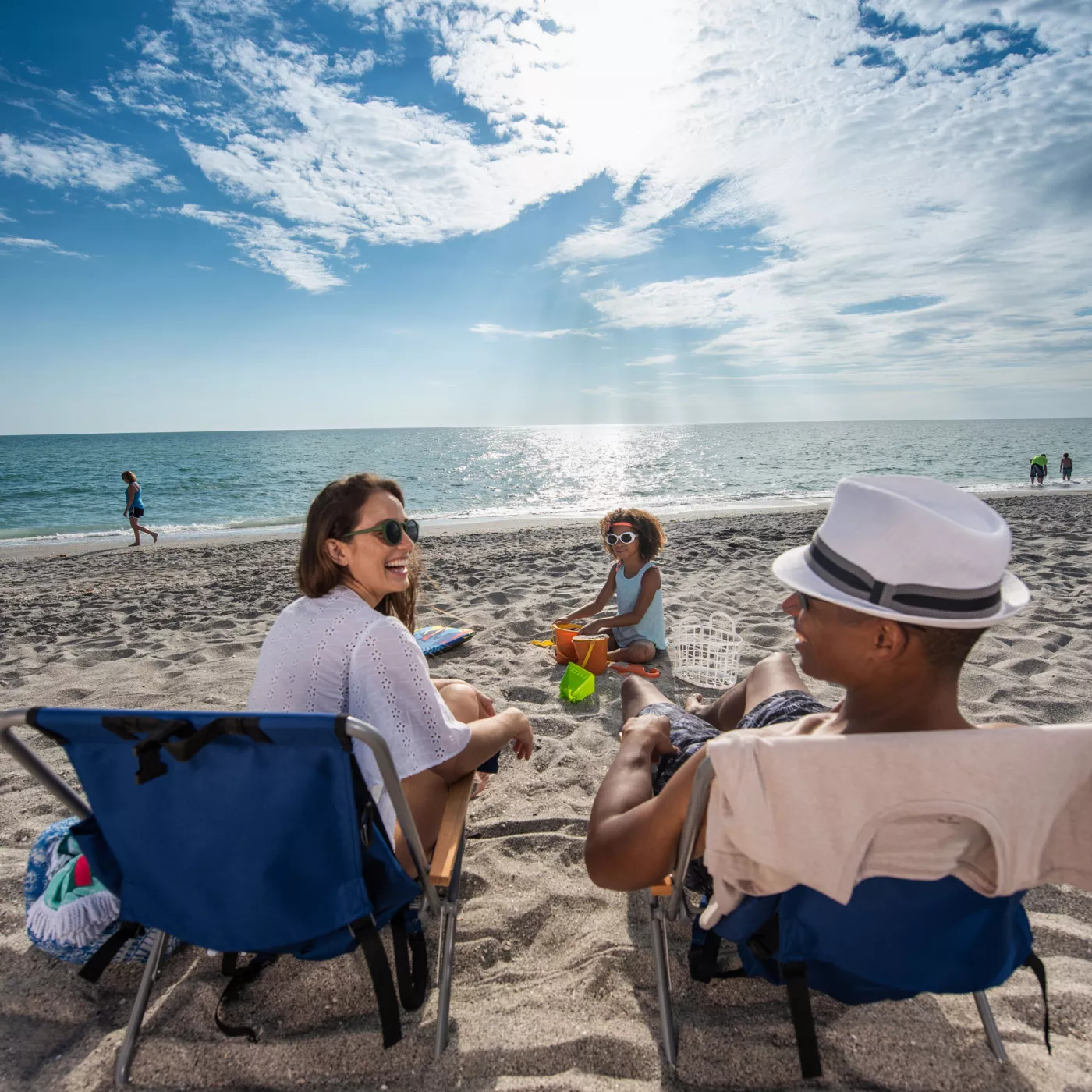Sarasota Beaches Safety Tips
How to play it safe when you visit Sarasota Couny's various beaches
How to play it safe when you visit Sarasota Couny's various beaches
Sarasota County’s beautiful beaches bring lots of visitors to our shores. To help ensure that you stay safe while having fun in the sun, here are some important rules and recommendations to follow for a restful and relaxing beach day.
Start Smart
It’s always a good idea to swim at beaches monitored by lifeguards. Sarasota County’s directory of beaches lists which have lifeguards (along with info about amenities like restrooms, picnic tables and concessions).
Sun protection is a must, no matter the time of year or cloud cover that day. Reapply sunscreen often, especially after swimming. Consider bringing an umbrella, hat, sunglasses and protective clothing. The sun is most intense during the midday hours, so an early morning or late afternoon beach trip can decrease your risk of getting sunburned.
Drink plenty of fluids (of the nonalcoholic kind) to avoid getting dehydrated. Watch out for signs of heat exhaustion. If you begin sweating heavily or experience muscle cramps, weakness, dizziness, nausea or vomiting, get help immediately.
Check out Visit Sarasota County’s Beach and Weather Conditions and Travel Alerts page for up-to-date info about any approaching tropical weather systems or other factors that could impact your beach trip.
Swimming Dos and Don’ts
Sarasota County’s Lifeguard Operations page offers a number of beach safety swimming tips. Don’t swim alone and don’t overestimate your abilities. Wearing a lifejacket can be a smart move for kids who aren’t strong swimmers or visitors who don’t have much experience swimming in ocean waters.
Even if you’re at a beach with lifeguards, parents should always be monitoring their kids when they’re in or near the water. Designate an adult as the “Water Watcher,” someone who promises to put away their phone or book and keep a constant watch on the kids. Switch the role frequently among all adults present so no one gets too tired.
If someone is struggling in the water and there are no lifeguards present, do not go in after them. Extend something like a pole or rope to the struggling swimmer from the shore or shallow water that they can grasp and get pulled in.
Need more advice? The American Red Cross offers lots of info and tips about swimming safely at the beach.
Beach Flags
Sarasota County lifeguards display color-coded flags to inform beachgoers about conditions each day.
- Green = Good swimming conditions
- Yellow = Use caution
- Red = Dangerous swimming conditions
- Double red = Beach is closed to swimming
- Purple = Hazardous marine life
Rip Currents
Rip currents can develop at our beaches and can be dangerous for swimmers who don’t know how to handle them. If you get caught in a rip current, swim parallel to shore until you get out of the current or lie back and float until the current ends. Then swim diagonally to shore. If you need help, wave; lifeguards consider waving a call for help.
To learn more about rip currents, the National Oceanic and Atmospheric Administration offers helpful videos on how to spot rip currents and how to escape them.
Pack-In and Pack-Out
All beachgoers must share the responsibility to help keep our shorelines clean and litter-free.
Everyone is encouraged to pay close attention to everything they "pack-in" for a day at the beach to make sure they can "pack-out" all of those items when it's time to leave. Around holidays, Sarasota County will often provide additional dumpsters, receptacles and trash pick-ups to support larger crowds. Proper disposal of litter helps keep our beaches clean and beautiful for all!
Red Tide
Red tide is a naturally occurring algae that can kill marine life and cause respiratory irritations in humans during blooms. People with respiratory problems should avoid the beach when red tide is present.
The Sarasota Operations Coastal Oceans Observation Lab at Mote Marine Laboratory and Aquarium provides daily beach condition reports to help you know what to expect before heading out to the sand. You can also find more info about red tide here.
Sea Life
Stingrays frequent our beaches during the warmer months. To avoid an encounter, shuffle your feet through the sand while walking in the water. If you do get stung, soak the area in hot water. Seek medical attention if the ray’s barb breaks off into the skin. Lifeguards can provide help if needed.
Sharks do live in Southwest Florida waters, but you can decrease your chances of running into one by not swimming at dusk or dawn and by not swimming near piers or where people are fishing. If a shark does approach, stay calm, let it swim past, then get out of the water.
Lightning
Florida is the lightning capital of the world. Lightning can travel 10 miles in advance of an approaching storm, so if you hear thunder, leave the water and the beach (even if you haven’t seen any lightning yet). If you cannot get off the beach in time to get indoors, lie down. Lightning strikes the tallest object in an area, so make yourself the smallest.

![Boat parking at The Crow’s Nest in Venice [Photo: Lauren Jackson]](/sites/default/files/styles/popular_stories_teaser/public/2023-import/The-Crow%2527s-Nest-cropped__OPT.jpg.webp?itok=ycs37M-O)


